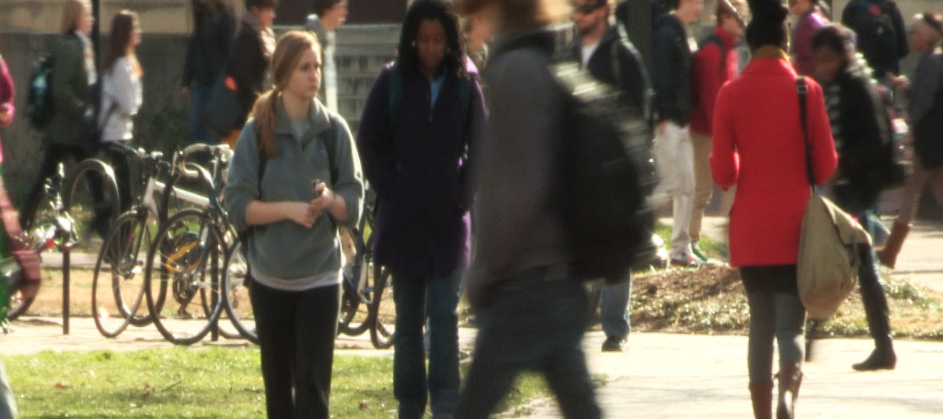UNC-A, WCU top voter turnout among NC schools

Students at two North Carolina universities turned out for the state’s March 15 primary election at a higher rate than the general voting population, bucking a trend of low voter participation among college students.
Conducted by Matthew Calarco and Michael Riley of Common Cause North Carolina, the new study looks at election turnout among 18- to 25-year-old voters at precincts closest to 25 universities around the state. The findings show UNC-Asheville at the top of the list with 42 percent turnout, followed by Western Carolina University at 37 percent.
Both colleges exceeded the 36 percent overall turnout seen for the primary election and they dramatically outperformed the 19 percent average turnout seen at the schools included in the study.
“The conventional wisdom is that young voters lag well behind middle-aged and older voters in election participation, so it’s inspiring to see students at UNC-A and WCU defy that stereotype,” said Bob Phillips, executive director of Common Cause NC. “We hope this study can in turn inspire campuses to look at ways to increase turnout for this fall’s election and in the years to come.”
While no single cause was found to account for the schools seeing stronger-than-average turnout, an examination of UNC-Asheville’s get-out-the-vote effort reveals several techniques that may have contributed to higher participation on that campus.
According to Charlie White, student body president at UNC-Asheville, part of the school’s comprehensive strategy included busing students to polling locations, on-campus voter registration drives and the use of university resources to advertise voting information.
Finally, “we [the student body] have met several times over the past two years with faculty leadership to encourage them to guide their students to register to vote and get out to vote,” White said.
The Faculty Senate at UNC-Asheville in 2013 passed a resolution to increase civic engagement on campus. The plan included forming a UNC-A College Republicans group to provide conservative students with opportunities for political engagement on par with what progressive students had with the existing UNC-A College Democrats. It also called for including key election dates on university calendars, sending students information about registering to vote at the beginning of the semester and reminding students about voting opportunities during the early voting period and on Election Day.
“When colleges are committed to encouraging civic participation among their students, it gives university communities a stronger voice in elections and helps students build a lifelong habit of engaging in the democratic process,” said Alyssa Canty, college outreach coordinator with Common Cause NC.
The study was performed by gathering data from the State Board of Elections and comparing turnout of 18-25 year olds, a proxy for university students, with that of the general population in the sample university precinct where a majority of residence halls are located.
The results are as follows:
1. UNC-Asheville (42 percent)
2. Western Carolina University (37 percent)
3. UNC-Chapel Hill (35 percent)
4. Meredith College (31 percent)
5. Appalachian State University (29 percent)
6. NC State University (28 percent)
7. UNC-Greensboro (26 percent)
8. Davidson College (23 percent)
9. Campbell University (21 percent)
10. UNC-Wilmington (20 percent)
11. Duke University (17 percent)
12. Wake Forest University (17 percent)
13. UNC-Charlotte (16 percent)
14. UNC-Pembroke (15 percent)
15. Bennett College (14 percent)
16. NC A&T State University (14 percent)
17. Winston-Salem State University (14 percent)
18. NC Central University (13 percent)
19. East Carolina University (13 percent)
20. Fayetteville State University (12 percent)
21. Elon University (11 percent)
22. High Point University (8 percent)
23. Shaw University (7 percent)
24. St. Augustine’s University (6 percent)
25. Elizabeth City State University (4 percent)
See More: Voting & Elections
